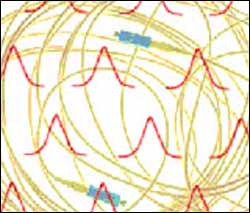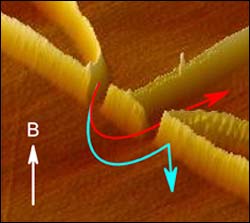This area deals with the fundamental laws and building blocks of nature and how they interact, the properties and the behavior of matter, and research into space and time and their structures.
innovations-report provides in-depth reports and articles on subjects such as astrophysics, laser technologies, nuclear, quantum, particle and solid-state physics, nanotechnologies, planetary research and findings (Mars, Venus) and developments related to the Hubble Telescope.

Intergovernmental organisation urges scientists to present a unified coherent vision for large, expensive projects
The OECD Global Science Forum has developed findings and recommendations regarding future large projects in astronomy. Some of the recommendations are directed towards the international scientific community, others pertain more to the work of government funding agencies. Among the conclusions are: the need for a globally-coordinated scientific vision of the most imp

Light is so fast that it takes less than 2 seconds to travel from the Earth to the moon. This blazing fast speed is what makes the Internet and other complex communications systems possible. But sometimes light needs to be slowed down so that signals can be routed in the right direction and order, converted from one form to another or synchronized properly.
Now, physicists at the National Institute of Standards and Technology (NIST) have proposed a new way to slow light down to

On Jan. 14, 2005, the Huygens probe will plow into the orange atmosphere of Saturn’s moon, Titan, becoming the first spacecraft to attempt to land on a moon in our solar system since the Soviet Union’s Luna 24 touched down on Earth’s moon in 1976.
Though scientists hope that Huygens will survive the plunge, it will be flying blind through hydrocarbon haze and methane clouds to a surface that could consist of seven-kilometer-high ice mountains and liquid methan

On Wednesday 6 October 2004 a team of UK astronomers from Liverpool John Moores University and the University of Hertfordshire used the world’s largest robotic optical telescope, the Liverpool Telescope, to detect the optical light, or afterglow, from a Gamma Ray Burst (GRB).
“Gamma ray bursts are the most energetic explosions in the Universe and it is very exciting to have detected a Gamma Ray Burst afterglow for the first time with the Liverpool Telescope and then to watch i

University of California scientists working at Los Alamos National Laboratory have begun to analyze data from an instrument aboard the joint U.S.-European spacecraft Cassini. Although Cassini has only been orbiting the planet Saturn since July 1, data from the Cassini Plasma Spectrometer (CAPS) has already begun to provide new information about the curious nature of Saturn’s space environment.
CAPS had been detecting advance readings for several days before Cassini finally

Purdue University physicists have built a critical component for the development of quantum computers and spintronic devices, potentially bringing advances in cryptography and high-speed database searches a step closer.
A team of researchers including Leonid P. Rokhinson has created a device that can effectively split a stream of quantum objects such as electrons into two streams according to the spin of each, herding those with “up” spin in one direction and corralling those tha